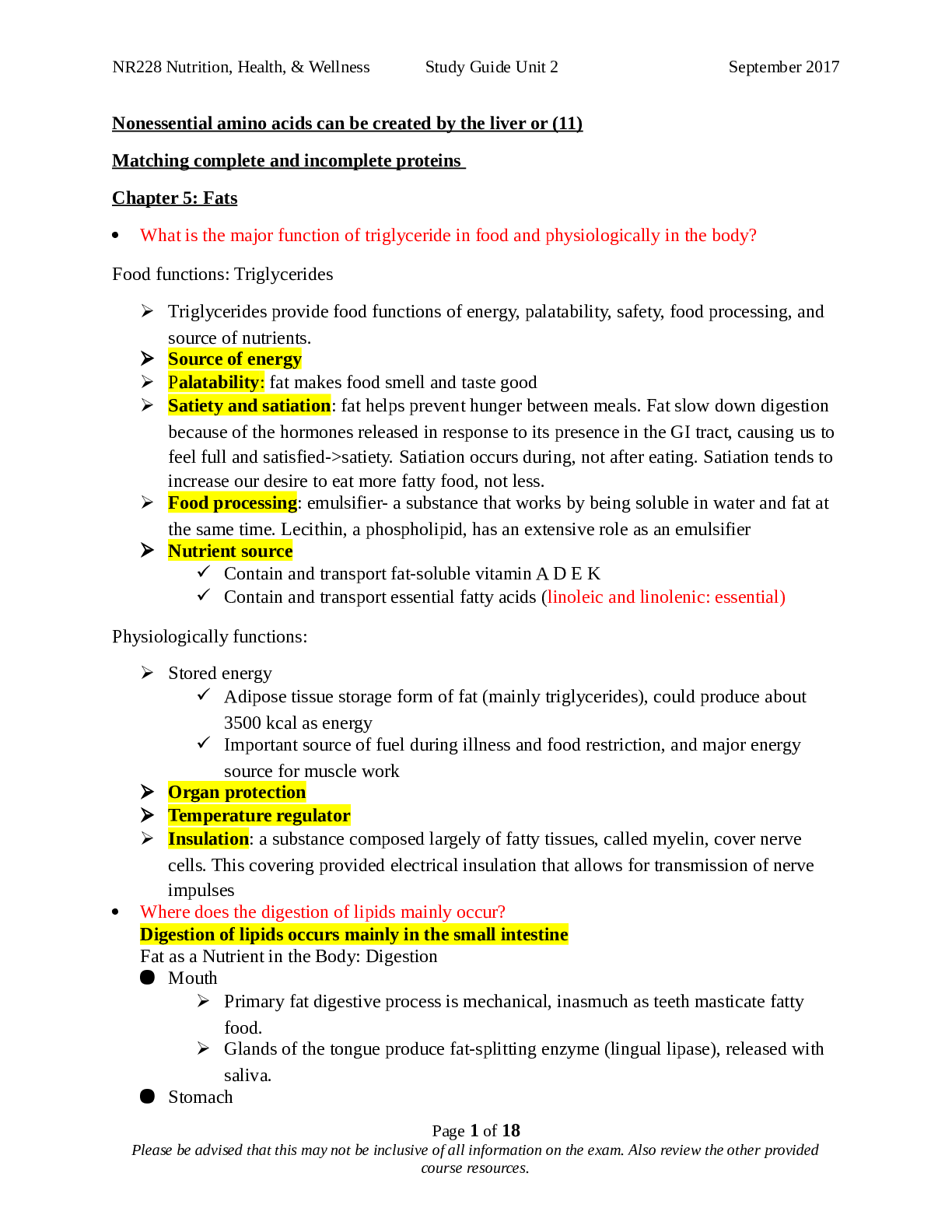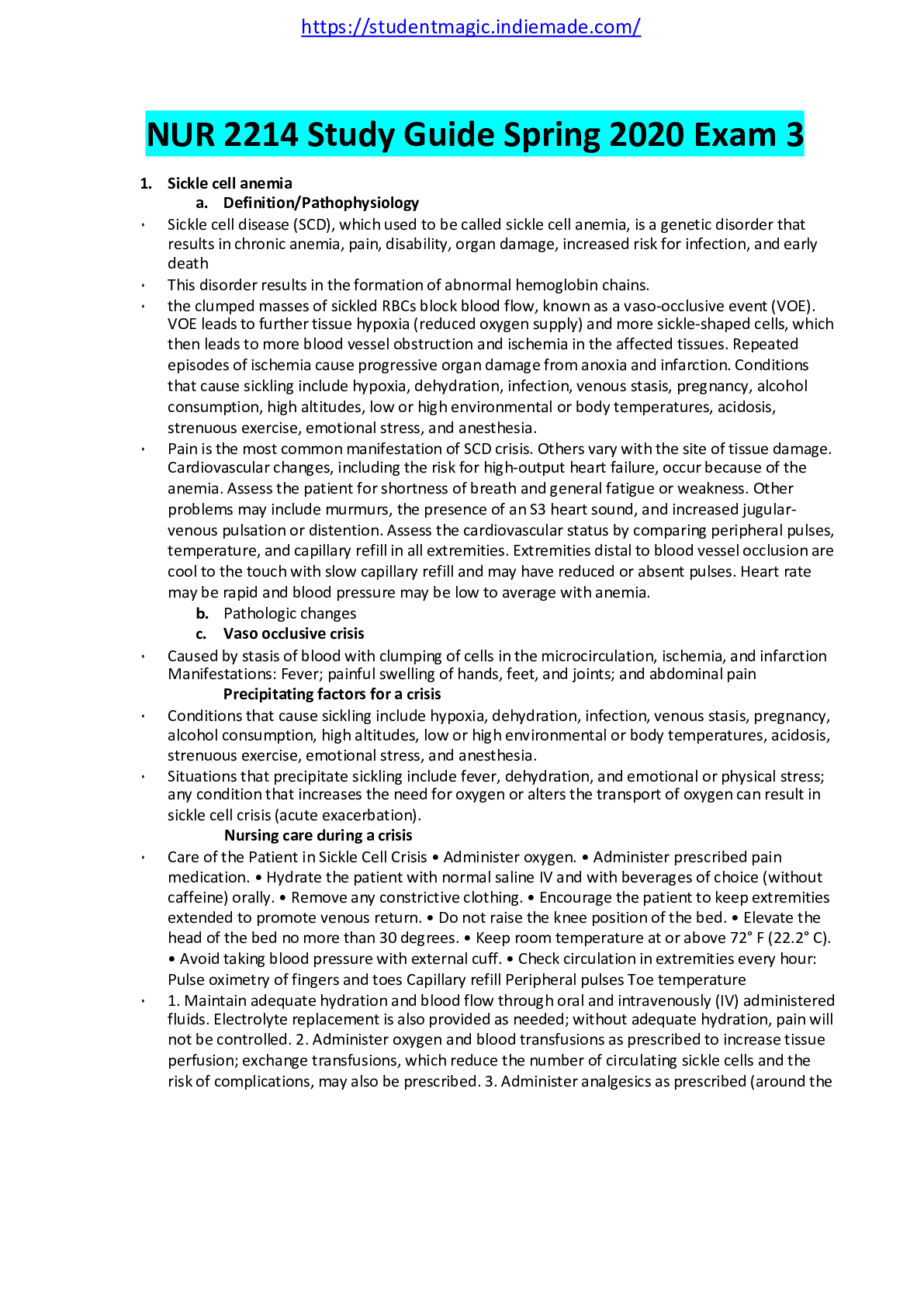Pharmacology > STUDY GUIDE > Pharm Reasoning Case Study (AL) (All)
Pharm Reasoning Case Study (AL)
Document Content and Description Below
Medication Categories Concepts Antihypertensives Perfusion NCLEX Client Need Categories Percentage of Items from Each Category/Subcategory Covered in Case Study Safe and Effective Care Environme... nt • Management of Care 17-23% ✓ • Safety and Infection Control 9-15% Health Promotion and Maintenance 6-12% ✓ Psychosocial Integrity 6-12% Physiological Integrity • Basic Care and Comfort 6-12% • Pharmacological and Parenteral Therapies 12-18% ✓ • Reduction of Risk Potential 9-15% ✓ • Physiological Adaptation 11-17% ✓ I. Initial Presentation: © 2020 KeithRN LLC. All rights reserved. No part of this case study may be reproduced, stored in retrieval system or transmitted in any form or by any means, electronic, mechanical, photocopying, recording or otherwise, without the prior written permission of KeithRN Susan Jones, 42-year-old female This study source was downloaded by 100000824524045 from CourseHero.com on 04-25-2021 18:27:22 GMT -05:00 https://www.coursehero.com/file/88693915/Pharm-Reasoning-Case-Study-AL-docx/ This study resource was shared via CourseHero.com Susan Jones is a 42-year-old African-American female with a past medical history of diabetes mellitus type II. She works in a manufacturing plant in her hometown. While at work, she feels faint and has to sit down. The occupational nurse is contacted to assess her. Susan Jones is married and a mother of two elementary age children. She has been employed in her current position for two years. 1. What data from the present problem are RELEVANT and must be NOTICED as clinically significant by the nurse? (NCSBN: Step 1 Recognize cues/NCLEX Reduction of Risk Potential) RELEVANT Data from Present Problem: Clinical Significance: Client has dx of diabetes mellitus type 2 At work client feels faint, dizzy, and has to sit down This dx typically comes with many complications, perhaps hypoglycemia could be contributing to her reason for admission This client could be dehydrated, maybe she is not getting enough O2, or could be related to her diabetes. Need to assess the client further investigation of CV system indicated. As the nurse responsible for this patient, you promptly review the medical history and note that she has NKDA. This is her PMH and current home medications documented in the employee’s medical record: 1. What is the RELATIONSHIP of the past medical history and current medications? Why is your patient receiving these medications? (Which medication treats which condition? Draw lines to connect) Medical History (PMH): Home Medications: Hypertension GERD Type II diabetes mellitus ASA 81 mg PO daily Lisinopril 40 mg PO daily HCTZ 25 mg PO am Metformin 875 mg PO BID Omeprazole 20 mg PO daily Applying your knowledge of pharmacology, to provide safe patient care, answer the following essential information: 2. List each home medication from the scenario and answer the following: (NCLEX Pharmacologic and Parenteral Therapies) Home Medication: Pharm. Class: Indication(s): Mechanism of Action In OWN WORDS: Body System Impacted Common Side Effects Nursing Assessments: ASA 81mg NSAID Antipyretic Salicylate Anticoagulant/Blood Thinner Decreases the chance of occlusion in blood vessels by platelet aggregation CV Bleeding, hemmorage, nausea, bruising Watch for hypersensitivity reactions. Assess for salicylate Lisinopril 40 mg ACE inhibitor HTN Renal Hypotension, dizziness Monitor BP frequently, I&O, weights, elytes. Test pt for © 2020 KeithRN LLC. All rights reserved. No part of this case study may be reproduced, stored in retrieval system or transmitted in any form or by any means, electronic, mechanical, photocopying, recording or otherwise, without the prior written permission of KeithRN This study source was downloaded by 100000824524045 from CourseHero.com on 04-25-2021 18:27:22 GMT -05:00 https://www.coursehero.com/file/88693915/Pharm-Reasoning-Case-Study-AL-docx/ This study resource was shared via CourseHero.com pregnancy. HCTZ 25 mg Thiazide diuretic HTN A loop diuretic that increases the output of urine CV, Renal Electrlyte imbalance, dehydration Monitor BP frequently, I&O, weights, elytes Metformin 875 mg Biguniade Antihyperglycemic agent Diabetes and Prediabetes Inhibits glucose production and release from the liver Endocrine N/V/D – GI upset Monitor glucose, HbA1C, metabolics Omeprazole 20 mg Anti ulcer agent Proton pump inhibitor Tx GERD or acid reflux Binds to gastric enzymes preventing reflux of HCL and diminished accumulation GI Tract GI upset/mild discomfot Assess for stomach pain, bleeding, or other complications. Advise pt not to over-take as could lead to alkalosis 3. Based on this patient’s home medication list, does the nurse need to address the clinical concern of polypharmacy with the primary care provider? No, due to the patients current dx the medications are appropriate. 4. Based on this patient’s home medication list, are there any concerning medication interactions that the nurse needs to communicate to the primary care provider? No, I don’t see a need to contact provider II. Present Problem: Susan had an exercise stress test six months ago and was evaluated by a cardiologist. She was referred by her primary care provider due to risk factors of stress, obesity, hypertension, smoking, diabetes mellitus and a positive family history of coronary artery disease. Susan had a negative exercise stress test, but was frightened by the experience. In the past six months, she has stopped smoking, began exercising and lost 20 pounds. She has eliminated many processed foods in her diet and has adopted a "clean eating" approach. 1. What data from the present problem are RELEVANT and must be NOTICED as clinically significant by the nurse? (NCSBN: Step 1 Recognize cues/NCLEX Reduction of Risk Potential) RELEVANT Data from Present Problem: Clinical Significance: Taking multiple antihypertensives Taking metformin Obese but losing weight – 20 lbs Could lower BP to dangerous levels, put pt at risk for falls Pt is diabetic increasing need for individualized treatment D/t pts obesity status losing weight is healthy and can help improve patients quality of life and help symptoms of other complications © 2020 KeithRN LLC. All rights reserved. No part of this case study may be reproduced, stored in retrieval system or transmitted in any form or by any means, electronic, mechanical, photocopying, recording or otherwise, without the prior written permission of KeithRN This study source was downloaded by 100000824524045 from CourseHero.com on 04-25-2021 18:27:22 GMT -05:00 https://www.coursehero.com/file/88693915/Pharm-Reasoning-Case-Study-AL-docx/ This study resource was shared via CourseHero.com Stress Test Taking multiple diuretics Negative – CV not a big worry at this point Would want to monitor kidney fxn regularly as well as electrolyte levels for imbalances Recognizing a potential problem, you collect a full set of vital signs and complete a nursing assessment: Current VS: P-Q-R-S-T Pain Assessment: T: 98.4 F/36.9 C (o) Provoking/Palliative: Reports no pain at this time P: 90 (reg) Quality: R: 15 (reg) Region/Radiation: BP: 100/70 Severity: O2 sat: 99% room air Timing: Blood Glucose finger stick: 101 2. What VS data are RELEVANT and must be interpreted as clinically significant by the nurse? (NCSBN: Step 1 Recognize cues/NCLEX Reduction of Risk Potential) RELEVANT VS Data: Clinical Significance: Pulse – 90 BP – 100/70 Blood Glucose - 101 WNL but on the higher side – would want to watch Low BP could indicate the need for medication change – too low BP put pt at risk for falls Normal blood glucose shows pts symptoms are likely not due to hypoglycemia Current Assessment: GENERAL SURVEY: Pleasant, in no acute distress, calm, body relaxed, no grimacing, sitting in chair NEUROLOGICAL: Alert & oriented to person, place, time, and situation (x4); muscle strength 5/5 in both upper and lower extremities bilaterally. HEENT: Head normocephalic with symmetry of all facial features. PERRLA, sclera white bilaterally, conjunctival sac pink bilaterally. Lips, tongue, and oral mucosa pink and moist. RESPIRATORY: Breath sounds clear with equal aeration on inspiration and expiration in all lobes anteriorly, posteriorly, and laterally, nonlabored respiratory effort on room air. CARDIAC: Pink, warm, no edema, heart sounds regular, pulses strong, equal with palpation at radial/pedal/post-tibial landmarks, brisk cap refill. Heart tones audible and regular, S1 and S2 noted over A-P-T-M cardiac landmarks with no abnormal beats or murmurs. No JVD noted at 30-45 degrees. ABDOMEN: Abdomen round, soft, and nontender. BS active in all 4 quadrants GU: Reports no changes in urinary habits. Urine reported as clear, non-odorous, not painful, no burning, frequency of urination INTEGUMENTARY: Skin warm, but diaphoretic, normal color for ethnicity. No clubbing of nails, cap refill <3 seconds. Hair soft-distribution normal for age and gender. Skin integrity intact, skin turgor elastic, no tenting present. 3. What assessment data is RELEVANT and must be interpreted as clinically significant by the nurse? (NCSBN: Step 1 Recognize cues/NCLEX Reduction of Risk Potential) RELEVANT Assessment Data: Clinical Significance: © 2020 KeithRN LLC. All rights reserved. No part of this case study may be reproduced, stored in retrieval system or transmitted in any form or by any means, electronic, mechanical, photocopying, recording or otherwise, without the prior written permission of KeithRN This study source was downloaded by 100000824524045 from CourseHero.com on 04-25-2021 18:27:22 GMT -05:00 https://www.coursehero.com/file/88693915/Pharm-Reasoning-Case-Study-AL-docx/ This study resource was shared via CourseHero.com Low BP Elevated Pulse Diaphoretic Likely due to the combo of medications Could be body/heart working harded to pump low blood volume Cause is unknown perhaps pt is uncomfortable or anxious – warrants further investigation 4. Interpreting relevant clinical data, identify potential problems. What additional data is needed to identify the priority problem and nursing priorities? (NCSBN: Step 2 Analyze cues/NCLEX Management of Care/Physiologic Adaptation) Likely Problems: Additional Clinical Data Needed: Syncope r/t hypotensive status Medications likely need adjusting Patient needs labs, BUN, Creatinine, Electrolytes, GFR, and preganancy test. Recognizing that a problem is present, us [Show More]
Last updated: 1 year ago
Preview 1 out of 9 pages
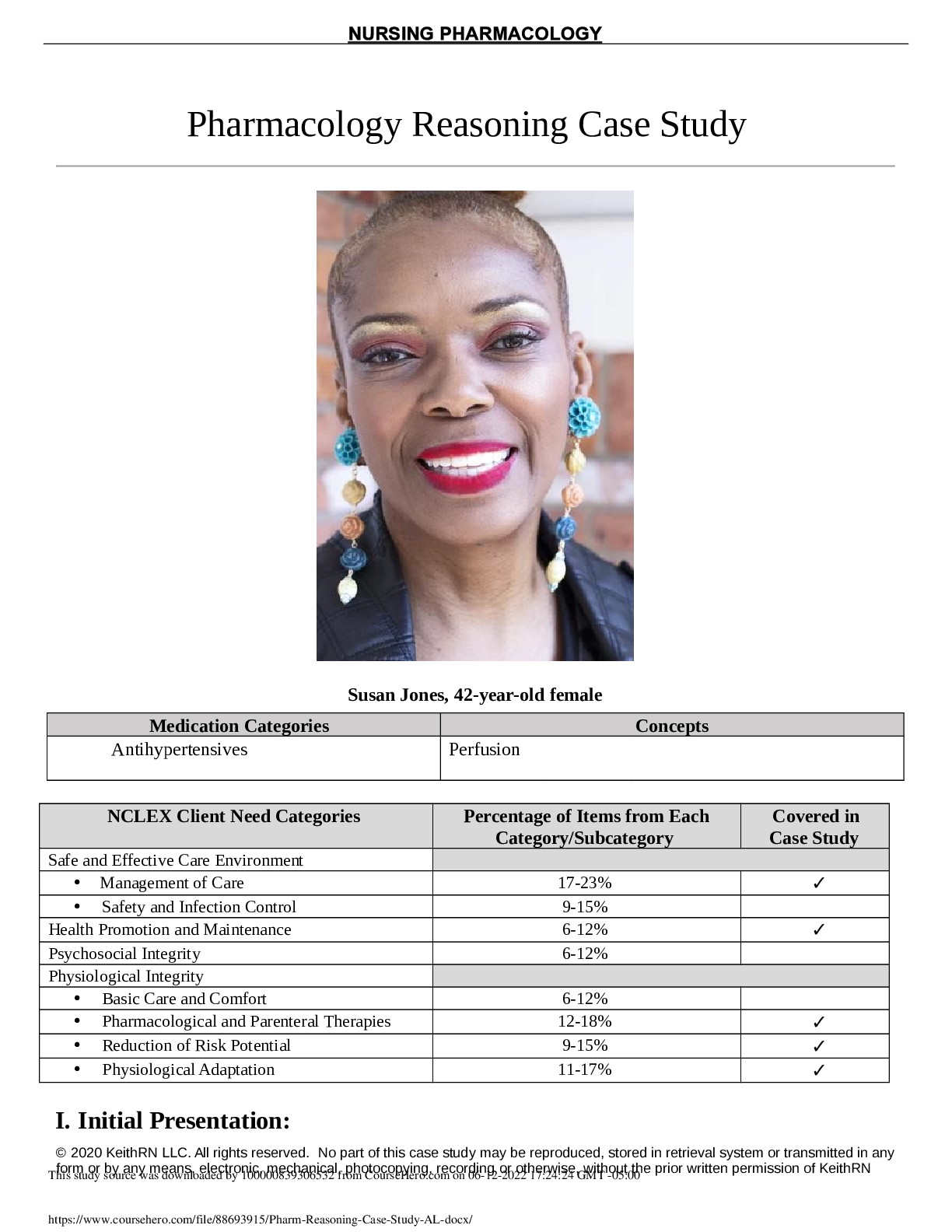
Reviews( 2 )

by Yolanda Hicks · 2 years ago
thanks and success in your studies if in need of any document feel free to ask by renurse. 2 years ago

by renurse · 2 years ago
Document information
Connected school, study & course
About the document
Uploaded On
Apr 26, 2021
Number of pages
9
Written in
Additional information
This document has been written for:
Uploaded
Apr 26, 2021
Downloads
1
Views
212

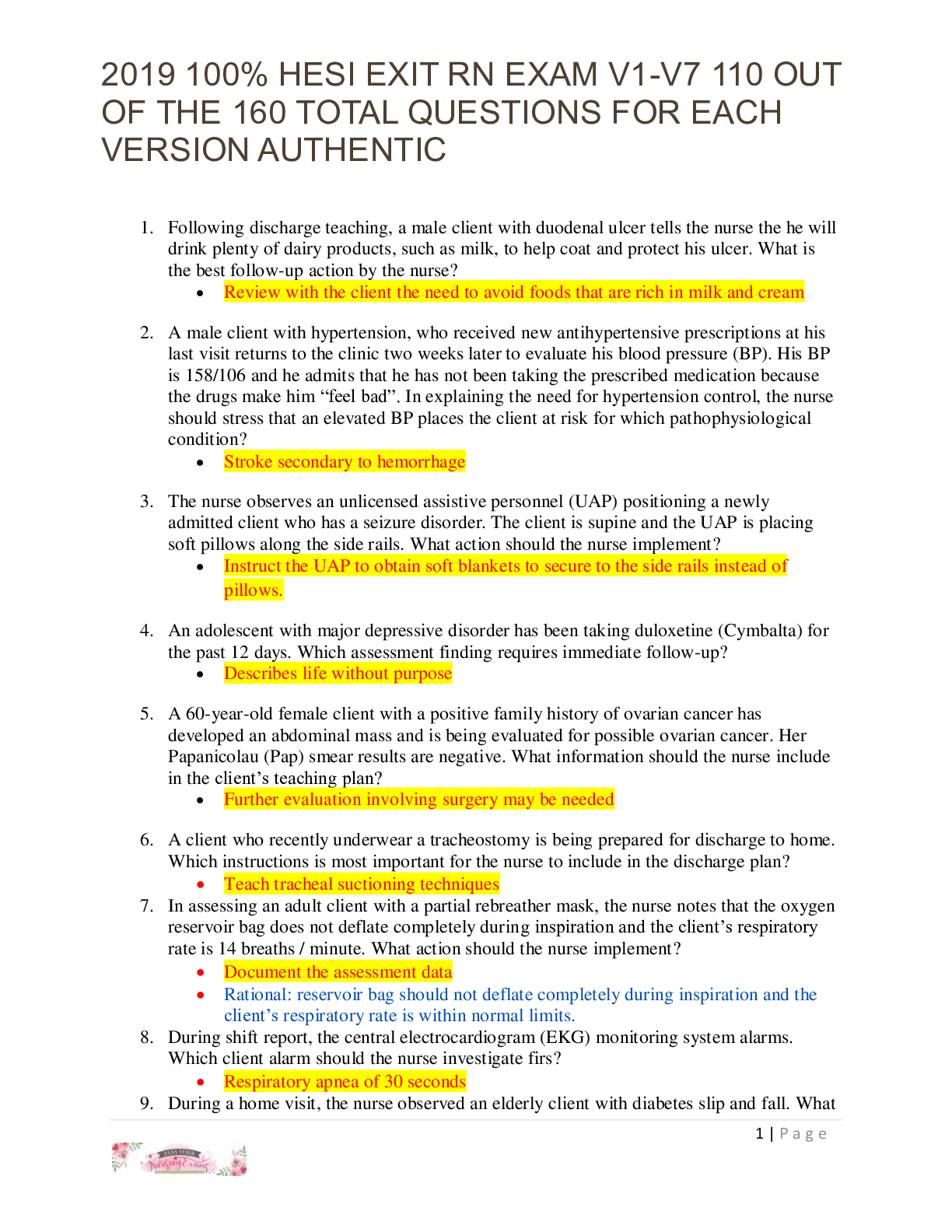

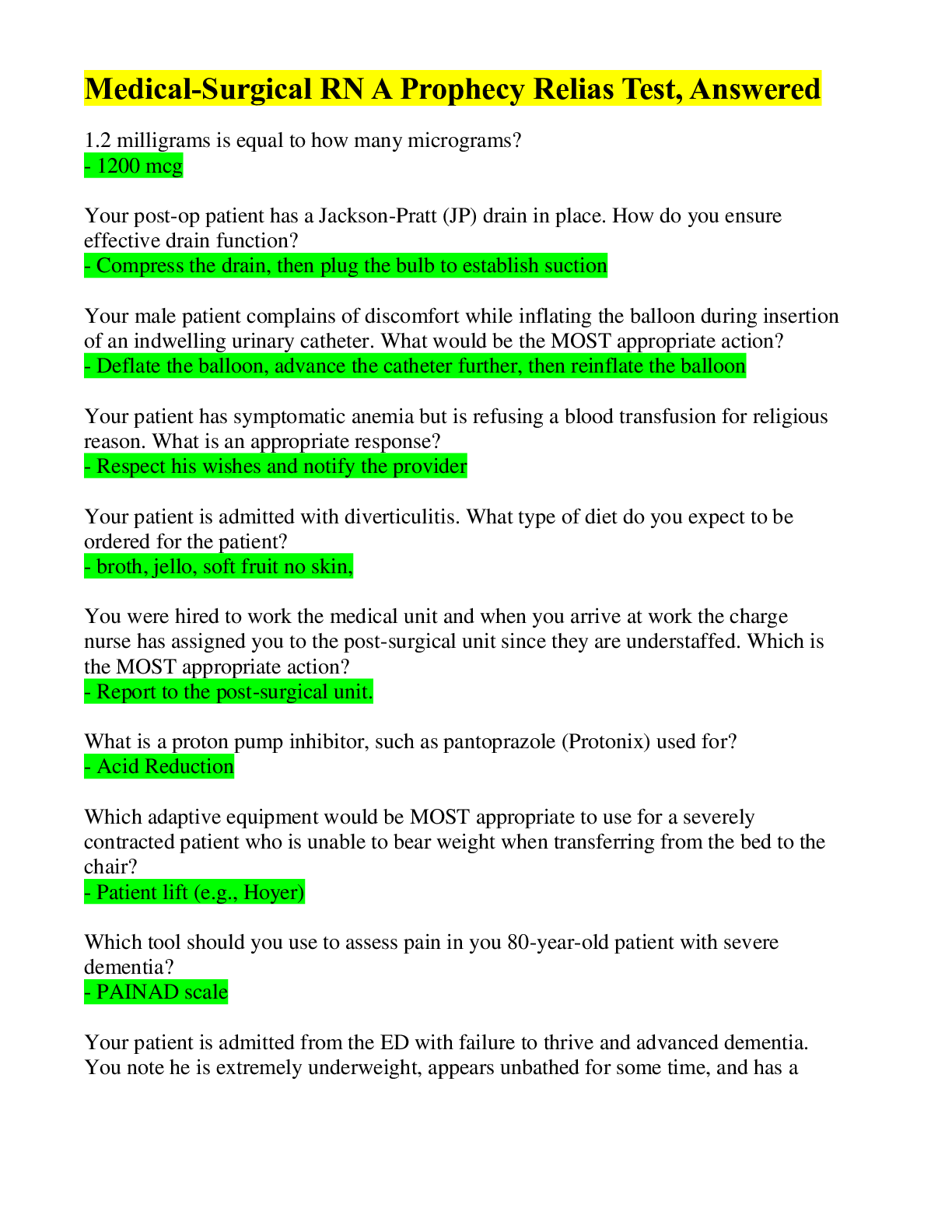
.png)

.png)

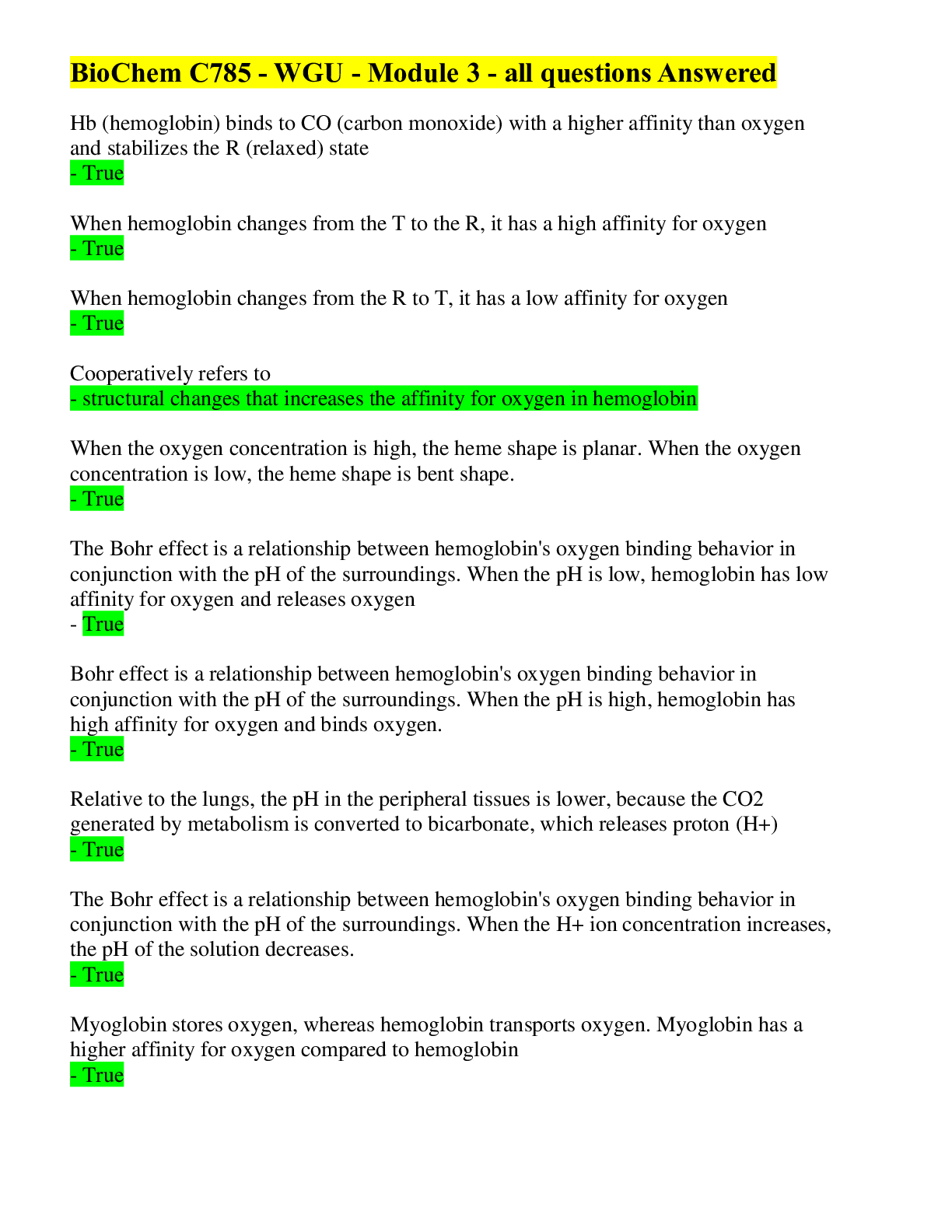

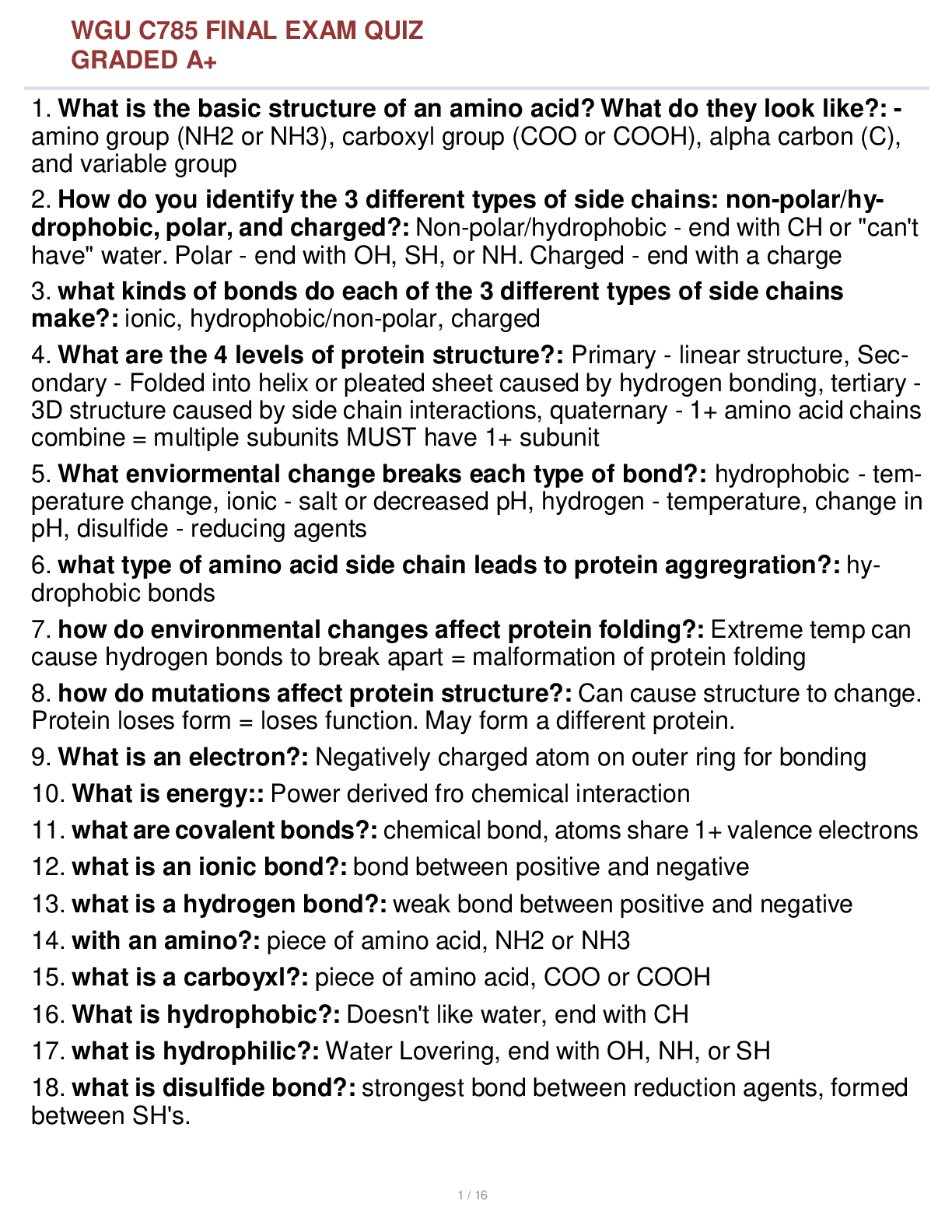
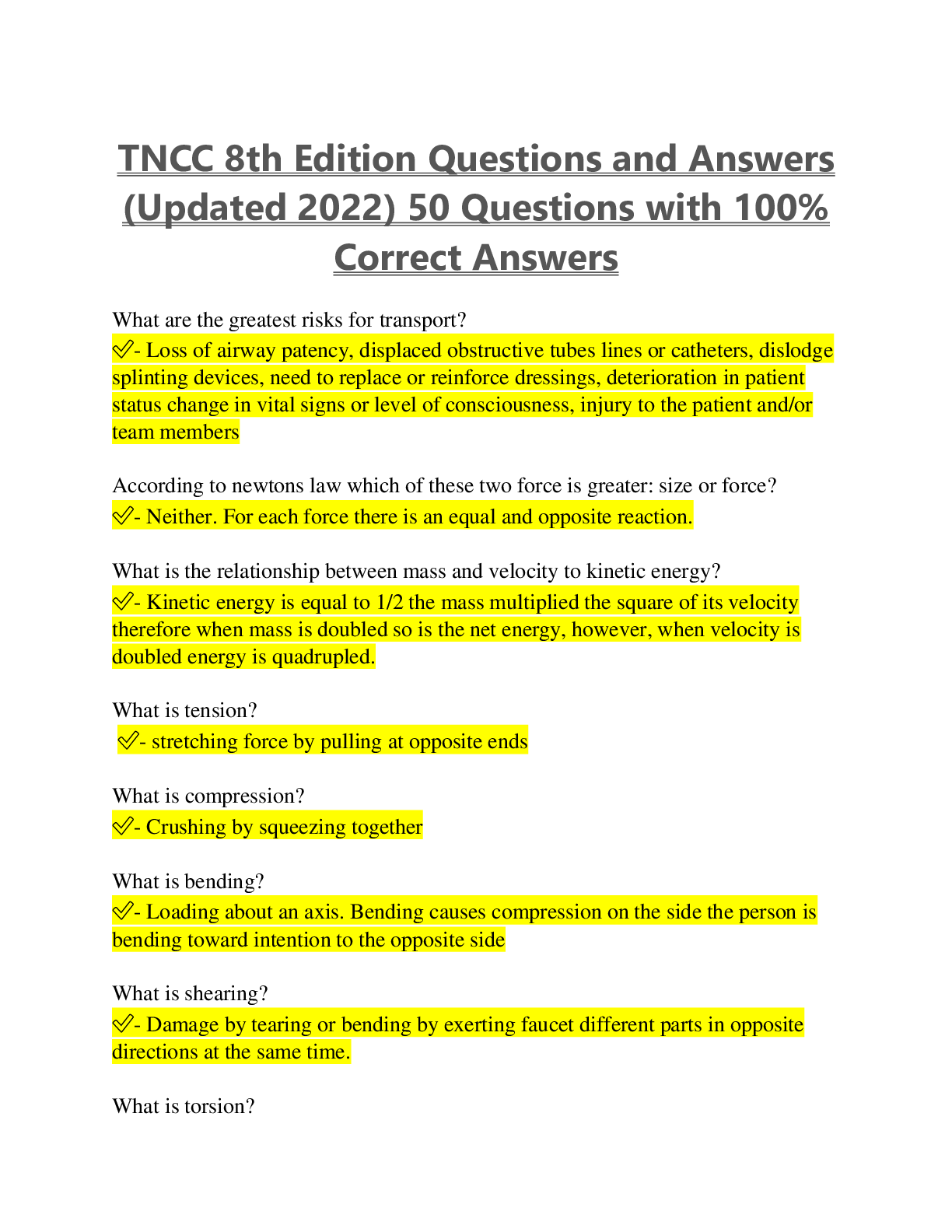
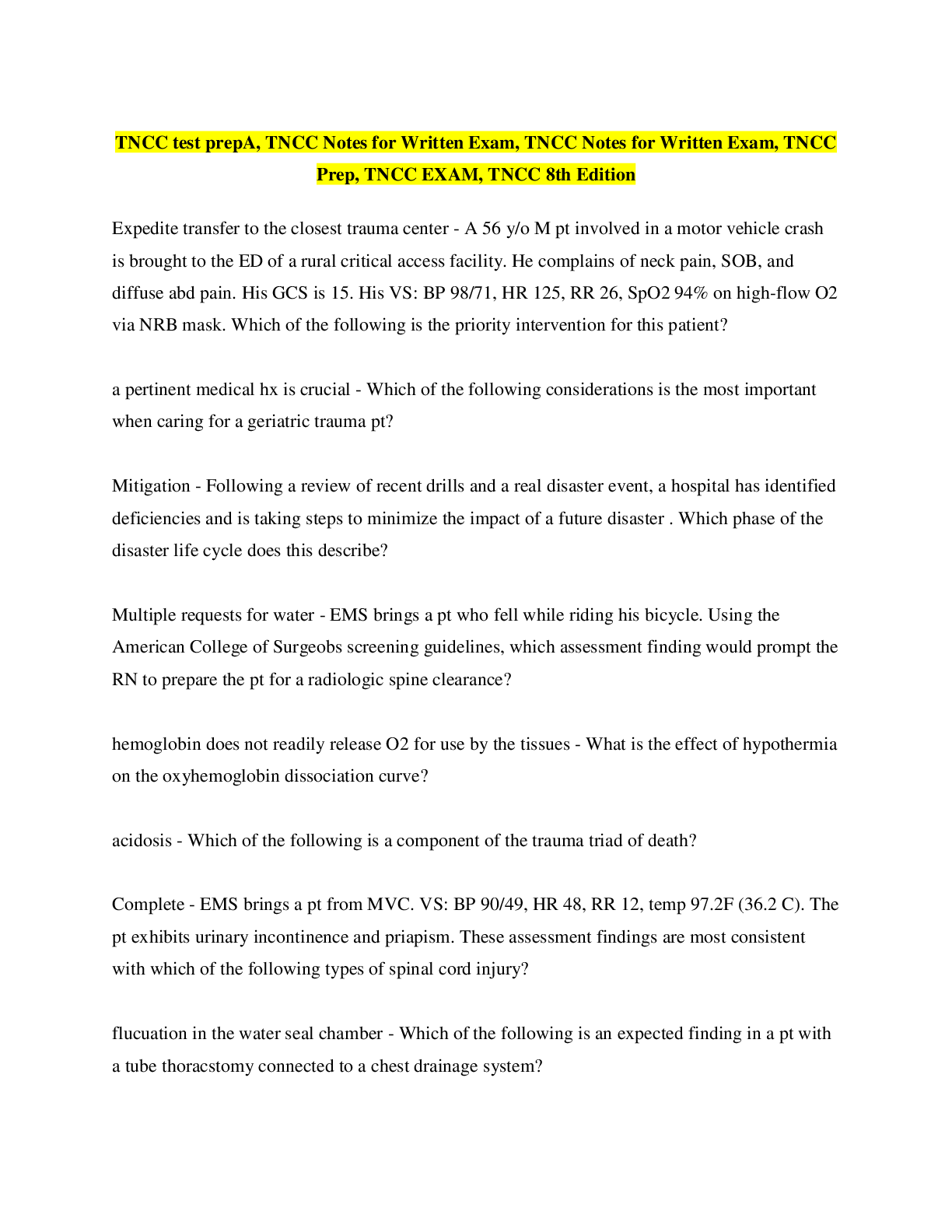
.png)
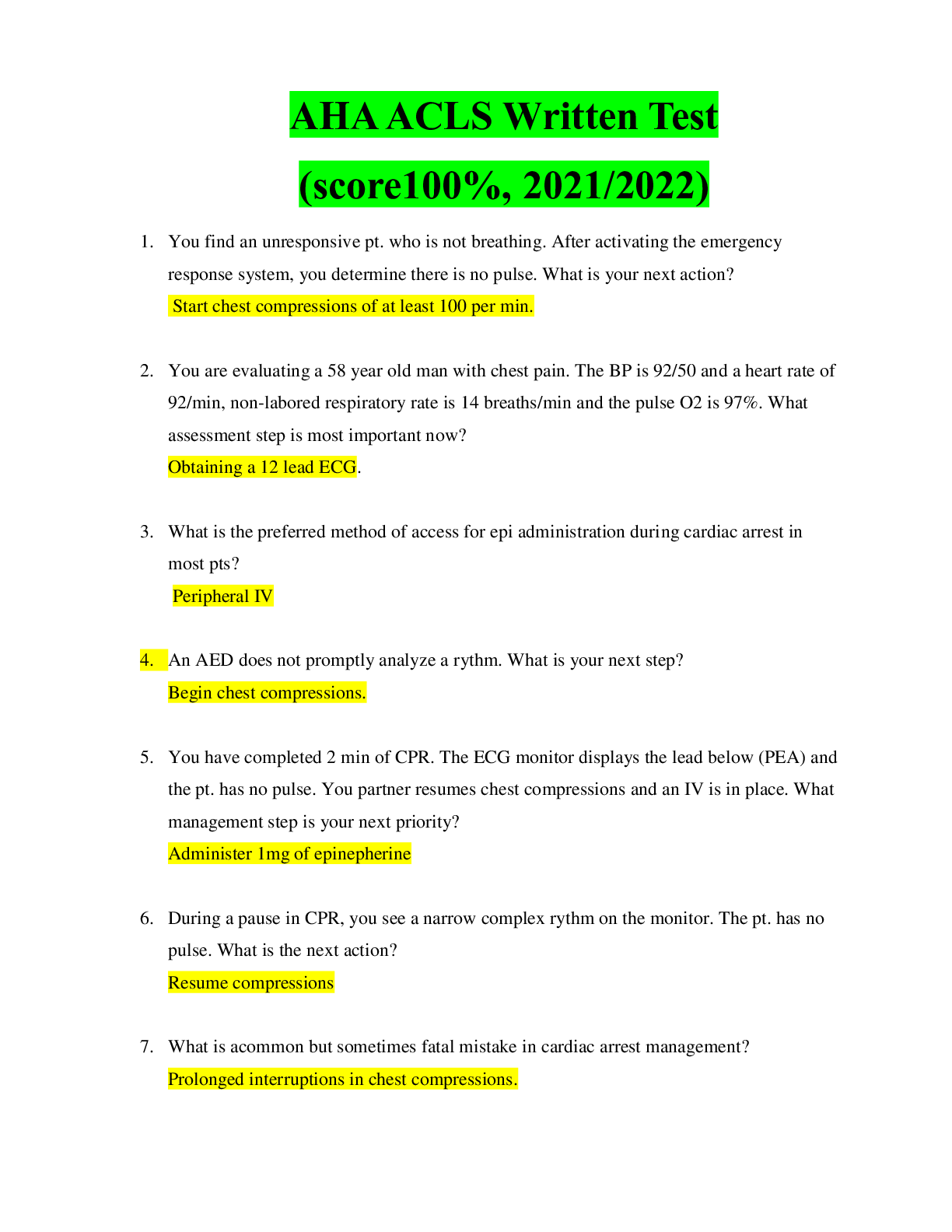






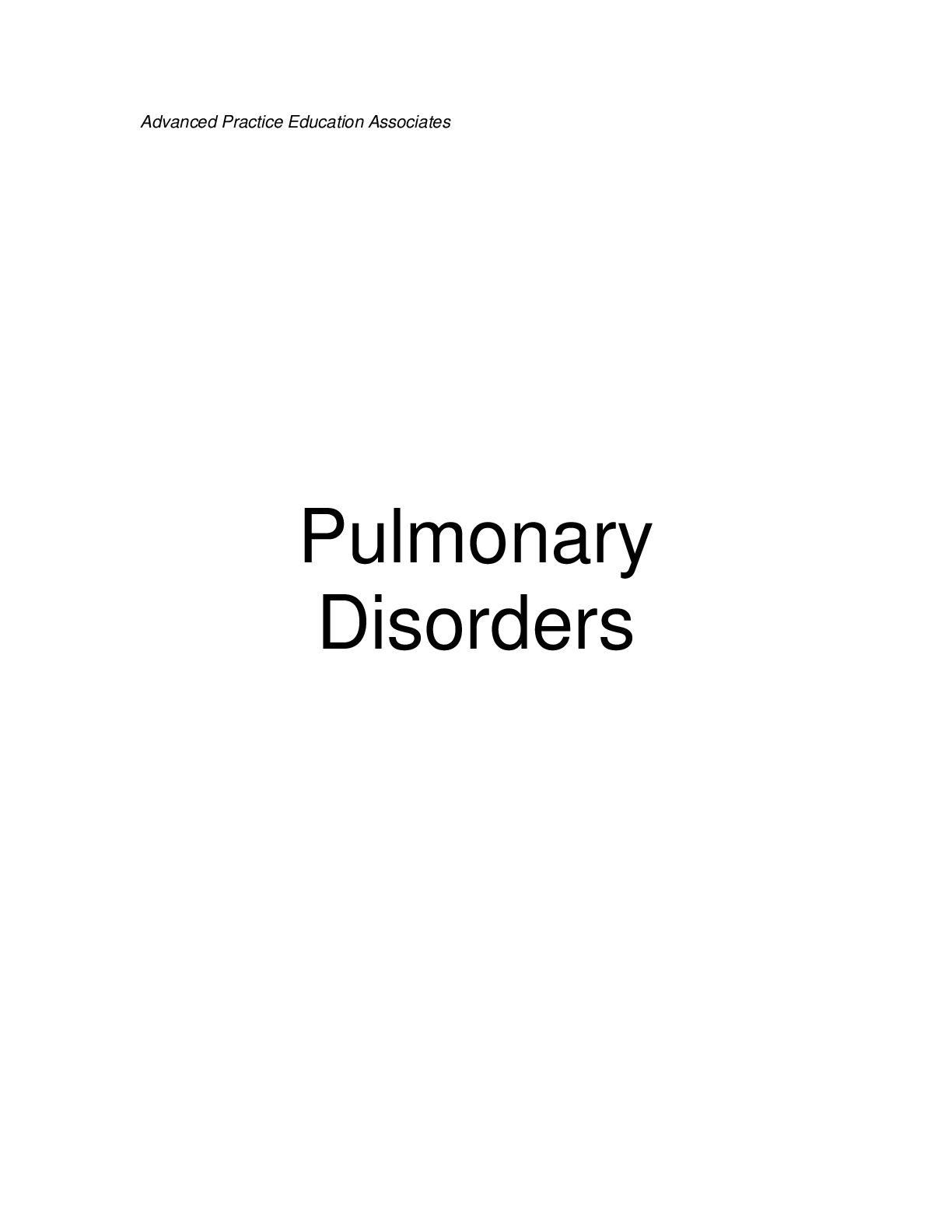
.png)





